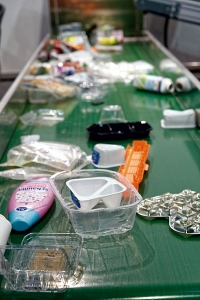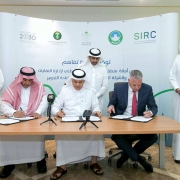Global Markets for Plastics Recycling and Recycled Material
There are many opportunities in the sector of plastics recycling.
According to the market research store Research and Markets, the global plastic waste management market will record a compound annual growth rate (CAGR) of almost three percent from 2019 to 2023. The use of plastic has been rising across industries such as consumer packaging, healthcare, textiles, food and beverages, retail, and others. The ubiquitous use of plastic has been contributing to the generation of a huge volume of plastic waste, the company stated. Poor plastic waste management has been causing adverse environmental effects. “This, in turn, has prompted governments to implement stringent policies and regulations for effective management of plastic waste. As a result, vendors of the plastic waste management market have been collaborating with industries and governments to establish plants and designated areas for plastic waste management, contributing to the market growth.”
The rising implementation of stringent government regulations and policies would impose responsibilities on plastic producers to collect and process plastic waste. “However, setting up separate recycling and disposing of facilities adds to operational cost and is also complex,” Research And Markets gave account. “This gave rise to third-party organizations called the producer responsibility organizations (PROs), which are hired by plastic-producing industries for plastic waste management at a cost.” The PROs avail services of certified plastic recyclers, which can also be PROs. The rising popularity of those organizations for plastic waste management would be one of the key trends “that will have a positive influence on the growth of the global plastic waste management market”.
Recycled plastics markets
The same goes for the demand for recycled material. As reported by Research And Markets, the worldwide relevant markets will grow by 2024 and focus on PET, HDPE, PP, LDPE – to name but a few. In 2018 alone, the global recycled plastics market reached a value of 35.4 billion US-Dollar. According to the forecasts, it will reach 50.5 billion US-Dollar by 2024, growing at a CAGR of 6.1 percent during the period 2019-2024. “Reduction of plastic wastes and numerous recycling programs have become a priority for both developed and developing nations across the globe,” the market research store underlined. “Owing to this, governments in different regions are implementing policies and regulations for controlling waste production, encouraging the reuse and recycling of plastic wastes, and encouraging systematic waste treatment.”
The demand for plastic material has been constantly increasing across several industries like food and beverage, automotive, packaging and healthcare. The development of these industries could be accredited to rising populations, inflating disposable incomes and continuous product innovations, the company informed. “In this context, higher manufacturing cost of virgin resins has necessitated the use of recycled plastic products, thereby bolstering the growth of the global recycled plastics market. Plastic manufacturers and recyclers are now being more focused on adding value and consumerism to the recycled plastic products.” Furthermore, several brands were investing in research and development to enhance the quality performance of recycled plastic products and incorporate them into every plastic component that they use.
A more optimistic outlook
The American market research and consulting firm Reports And Data found out that the value of the market could be somewhat higher. According to its current analysis, the global recycled plastics market was valued at 40.26 billion US-Dollar in 2018 and is expected to reach 66.74 billion US-Dollar by 2026; this means a CAGR of 6.5 percent.
“With the rising awareness, there has been a growth in the demand for this market,” Reports And Data stated. The resins manufactured from the plastic wastes can serve different purposes; this versatility of application makes the plastic re-granulate an attractive option. It can be used as a secondary raw material in various industries such as packaging, building and constructions, electronics and electricals, automotive, furniture, textiles and more. “However, it has a tough competition from the virgin plastics market.” This competition would be one of the major restraining factors for the recycled plastics market. Further findings from the report suggest:
■ The Asia Pacific region has been dominating the market since 2017. The region has a flourishing manufacturing sector with an abundance of cheap labor and resources. It continues to grow at a CAGR of 6.3 percent. China is one of the largest producers of recycled plastics due to the abundance of resources.
■ However, one of the major challenges to this market is the ban on imports of wastes and scrap plastics in China.
■ Polyethylene terephthalate (PET) holds the highest market share amounting to approximately 33.9 percent and continues to grow at a CAGR of 5.5 percent. PE holds the second largest share accounting for a market share of approximately 26.3 percent due to its widespread availability in the market.
■ Due to an exponential increase in the use of plastics over the years, plastic scrap is available everywhere in various forms. Thus, there is seldom a shortage of raw materials for processing and recycling plastics.
www.reportsanddata.com/report-detail/recycled-plastics-market, www.researchandmarkets.com
(GR 32019, Page 6, Photo: Andi Karg)










